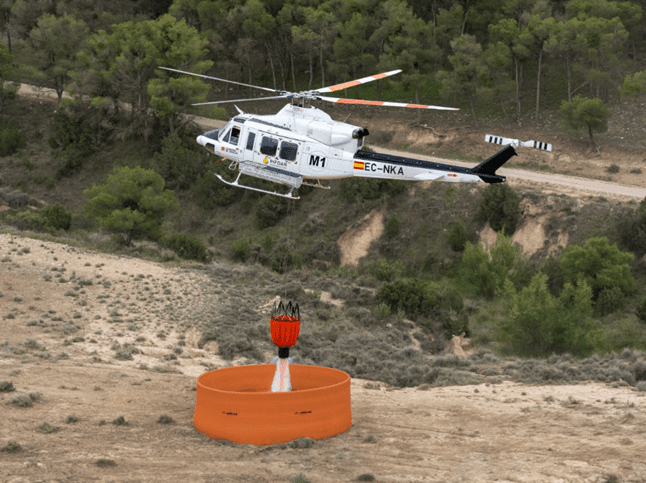By 2024, the UK’s electric bus fleet is set to become the largest in Europe, growing by almost 180%.
The primary technology being used to fuel electric buses is lithium-ion (li-ion) batteries. Although more sustainable, this brings new fire safety risks to the modern transport sector. If batteries become damaged – through overcharging, mechanical failure, physical impact or overvoltage, for example – the safety consequences can be extreme. Current suppression systems that are designed for traditional combustion engines only go so far in preventing the new fire risks for electric buses and coaches.
James Mountain, Sales and Marketing Director, Fire Shield Systems, examines these new fire risks, and discusses the practical steps that managers, operators and OEMs can take to mitigate them effectively.
The rising risk
UK cities including London, Coventry and Oxford are leading the way for electric bus adoption. While many cities across the UK are enforcing clear measures of low-emission zones, leading to a reduction in the use of HGVs, buses, taxis and private cars. To make electric transport more accessible for UK cities, the Zero-Emission Buses Regional Area (ZEBRA) scheme is making £120 million in funding available, which will deliver 500 zero-emission buses.
A unique challenge
EV-buses are widely considered to be a safe and sustainable alternative to the traditional combustion engine. However, li-ion batteries present their own safety risks, which can lead to severe safety risks for bus fleets and passengers. If li-ion batteries encounter high temperatures, overcharging, mechanical failure or are subject to physical impact, for example, it can cause an internal short circuit. In turn, this causes the battery to produce excess heat, triggering a chemical reaction within the battery cells. This is known as ‘thermal runaway’, where excess heat produces more heat, leading to ignition, toxic gas emissions and in some cases, large explosions. When in thermal runaway, a li-ion battery can produce its own oxygen from within its cells, propelling flames and making traditional fire suppression methods much less effective.
These types of fires are much less common than traditional combustion engine fires, however, when they do occur, the effects will be much larger. For example, there has already been numerous fires in Germany and China this year, which have led to the destruction of multiple electric buses during charging.
Mitigating risks
A number of practical steps can be put in place by OEMs and bus operators to manage the fire risks associated with electric fleets, including:
1. Charging
Overnight charging of electric buses creates significant fire risks, as the small battery components build up and store a large amount of energy. To minimise risk, measures should be taken to monitor electric charging stations whilst in use and ensure fully charged buses are disconnected from charging points.
2. Storage
Storing EV buses requires additional risk assessments, which should involve evaluating proximity to other vehicles and combustible materials, ensuring maximum space where possible.
Thermal runaway can take some time to initiate, meaning that consequences from any battery impact during the operating day may not be fully clear until the bus is stored overnight. Therefore, parking and storage should be monitored consistently to address and mitigate risks as they arise.
3. Suppression
EV buses create unique fire risks, therefore traditional fire suppression systems and techniques are not able to fully prevent li-ion battery fires. Instead, effective protection requires a fresh approach…
The need for a new suppression solution
Electric bus suppression systems should first aim to prevent thermal runaway. Where this isn’t possible, systems should delay propagation to allow passengers and drivers to evacuate and ensure fire risk is contained.
Dafo Vehicle Fire Protection and RISE (Research Institute of Sweden), as part of an EU funded initiative, performed extensive testing and research to create a new suppression solution to address the new fire risks. The development of this battery suppression system (Li-IonFireTM), explored the fire risks associated with battery spaces, including specific risks relating to charging and processes
for handling EVs and their batteries after impact.
Research revealed that even with late deployment, this system can delay a battery from reaching thermal runaway, raising the possibility of safe evacuation. This new suppression solution offers an early warning system and spot cooling, which prevents thermal runaway from occurring, containing and suppressing a fire.
A safer future for the UK’s electric buses
The growth of electric buses and coaches in the UK requires fire safety measures to keep pace to protect lives, vehicles and valuable other assets. Standards are beginning to change, but OEMs, vehicle maintenance teams and operators all have a key role to play in ensuring risks are effectively managed.
To stay up to date on the latest, trends, innovations, people news and company updates within the global fire market please register to receive our newsletter here.
Media contact
Rebecca Morpeth Spayne,
Editor, International Fire Buyer
Tel: +44 (0) 1622 823 922
Email: editor@firebuyer.com









